Exploring the Unique Types of Lemurs in Madagascar”
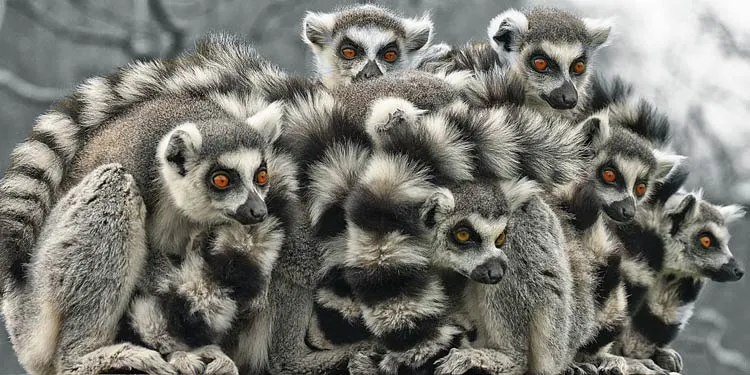
Madagascar, the world’s fourth-largest island, is home to a stunning array of wildlife, but none are more iconic than lemurs. These primates are found nowhere else on Earth and play a vital role in Madagascar’s fragile ecosystems. There are over 100 different species and subspecies of lemurs, each with its own behavior, habitat, and appearance. This article explores the major types of lemurs, what makes them unique, and how they contribute to the biodiversity of their island home.
1. Ring-Tailed Lemur (Lemur catta)
Famous for: Its bold black-and-white ringed tail
- Perhaps the most recognizable lemur, the ring-tailed lemur is a diurnal species (active during the day).
- They live in large social groups and spend more time on the ground than other lemurs.
- Found mostly in the dry forests and spiny scrublands of southern Madagascar.
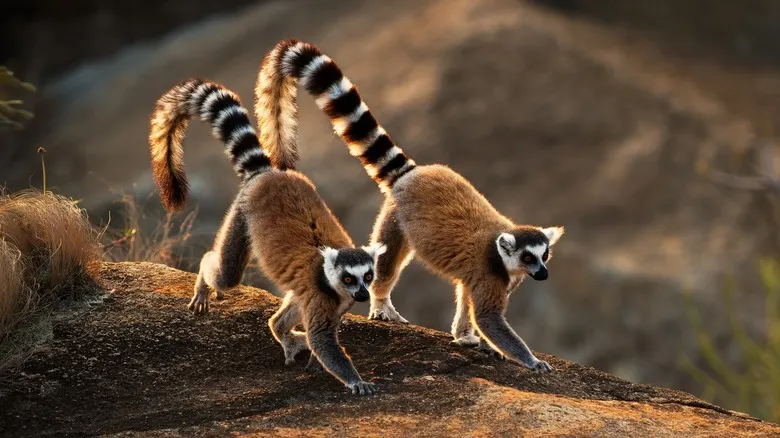
2. Indri (Indri indri)
Famous for: Its haunting call and lack of a tail
- The Indri is the largest living lemur, reaching up to 2.5 feet (75 cm) tall.
- It has a loud, melodic call that echoes through the rainforests of eastern Madagascar.
- Indris are strictly arboreal and form monogamous pairs.
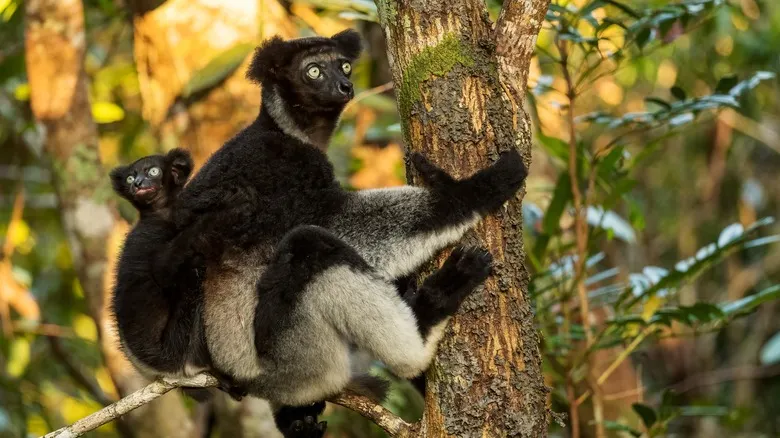
3. Sifakas (Genus: Propithecus)
Famous for: Their upright, dancing leaps
- Sifakas are medium-to-large lemurs known for their graceful, bipedal bounding across open ground.
- There are several species, including:
- Verreaux’s Sifaka (Propithecus verreauxi)
- Coquerel’s Sifaka (Propithecus coquereli)
- Diademed Sifaka (Propithecus diadema)
- They live in small family groups and prefer dry deciduous or montane forests.
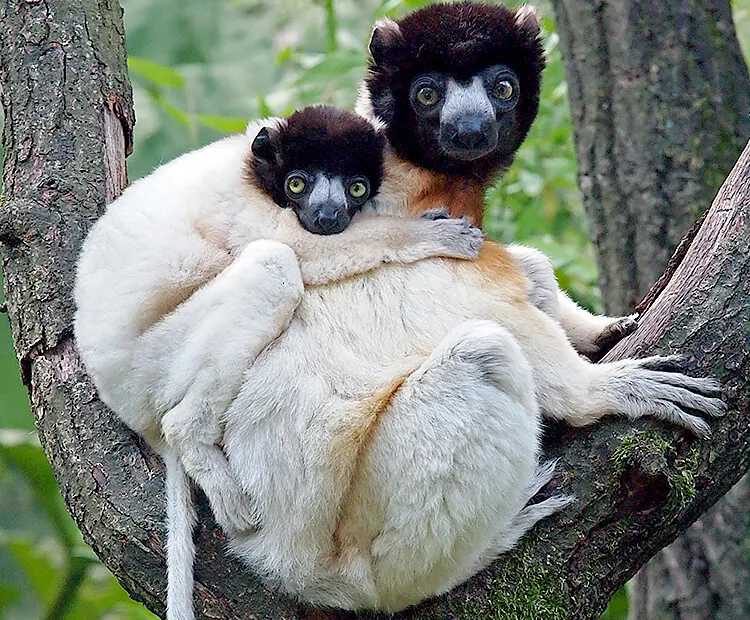
4. Mouse Lemurs (Genus: Microcebus)
Famous for: Being the world’s smallest primates
- These tiny nocturnal lemurs weigh as little as 30 grams (about the weight of a slice of bread).
- Species include:
- Gray Mouse Lemur
- Madame Berthe’s Mouse Lemur – the smallest of all primates
- Despite their size, they are quick and agile, feeding on fruit, nectar, and insects.
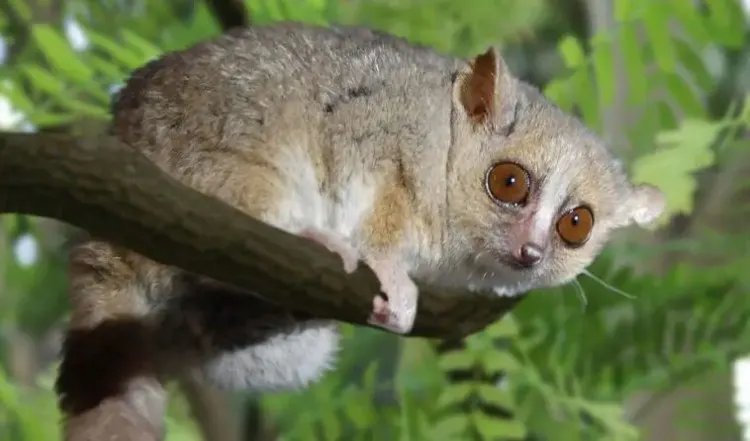
5. Aye-Aye (Daubentonia madagascariensis)
Famous for: Its bizarre appearance and long middle finger
- The aye-aye is nocturnal and has rodent-like teeth, large eyes, and a bushy tail.
- It uses its long, bony finger to tap wood and extract grubs, a unique feeding technique called percussive foraging.
- Considered an omen of bad luck in Malagasy folklore, it has often been killed on sight, putting it at risk.
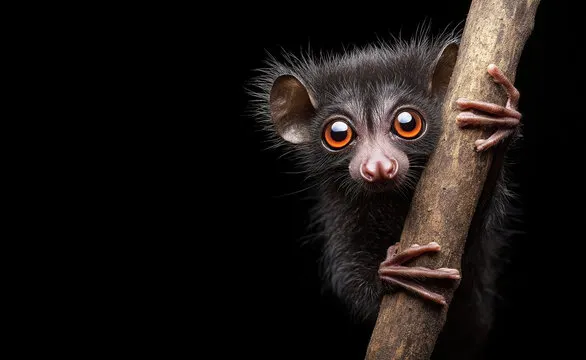
6. Bamboo Lemurs (Genus: Hapalemur & Prolemur)
Famous for: Eating toxic bamboo
- Bamboo lemurs specialize in eating bamboo shoots, which contain cyanide.
- Species include:
- Greater Bamboo Lemur (Prolemur simus) – critically endangered
- Golden Bamboo Lemur (Hapalemur aureus)
- Their digestive system helps detoxify the chemicals, a rare adaptation.

7. Sportive Lemurs (Genus: Lepilemur)
Famous for: Solitary and stealthy behavior
- These medium-sized, nocturnal lemurs are herbivores, feeding on leaves, fruits, and bark.
- There are over 20 recognized species, such as the Milne-Edwards’s Sportive Lemur.
- They are named for their athletic leaping abilities.

8. Ruffed Lemurs (Genus: Varecia)
Famous for: Loud calls and luxurious fur
- Two main species:
- Black-and-white Ruffed Lemur
- Red Ruffed Lemur
- They are among the largest lemurs and are important seed dispersers due to their fruit-heavy diet.
- Found in the eastern rainforests, they are active during the day and are critically endangered.
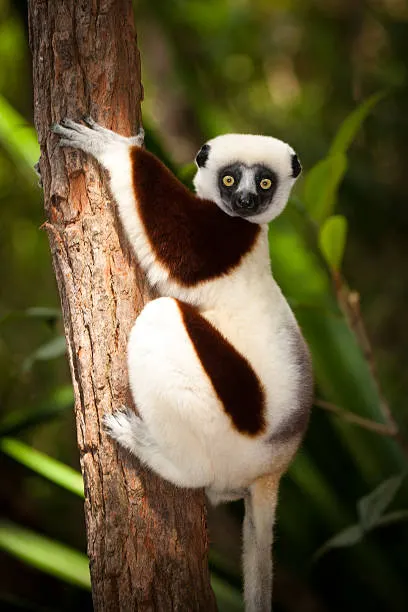
9. Dwarf Lemurs (Genus: Cheirogaleus)
Famous for: Hibernation behavior
- Dwarf lemurs, such as the Fat-tailed Dwarf Lemur, are the only primates known to hibernate for months.
- They store fat in their tails to survive the dry season.
- These nocturnal lemurs are tree dwellers and mostly solitary.
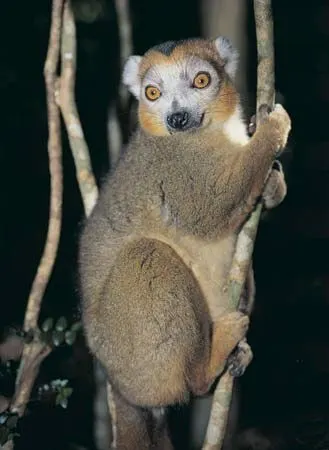
10. Woolly Lemurs or Avahis (Genus: Avahi)
Famous for: Their soft fur and leaf-based diet
- Avahis are small, nocturnal, and herbivorous, feeding mainly on leaves.
- They live in monogamous pairs and are found in various forest habitats.
- Less studied due to their shy and elusive nature.
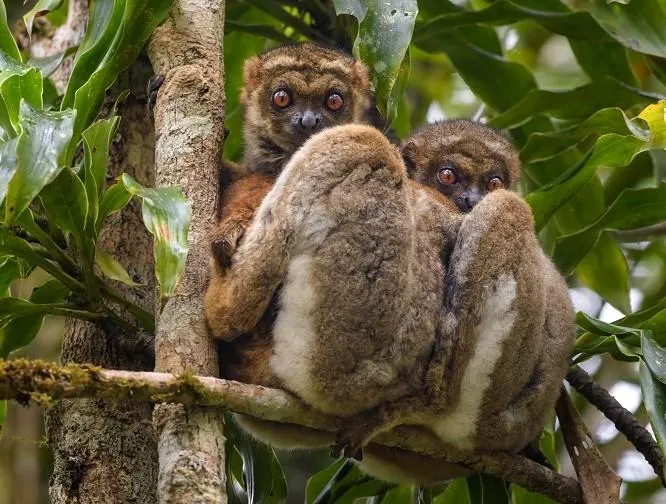
Threats and Conservation
Many lemur species are critically endangered due to:
- Habitat destruction from slash-and-burn agriculture
- Illegal pet trade and hunting
- Climate change impacting food availability
Conservation efforts include community-based forest management, eco-tourism, and protected areas, but much more work is needed to safeguard their future.
Conclusion: Lemurs as Madagascar’s Living Treasures
Lemurs are not just biological marvels—they are ambassadors of Madagascar’s uniqueness. Each type of lemur, from the mighty Indri to the miniature mouse lemur, offers insight into the island’s evolutionary history and ecological diversity. Understanding and protecting these fascinating primates is essential not only for Madagascar but for global biodiversity as a whole.



